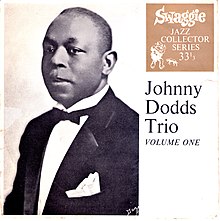
An Extended Play (EP) is a musical recording that contains more tracks than a single but fewer than an album or LP record. Contemporary EPs generally contain up to eight tracks and have a playing time of 15 to 30 minutes. An EP is usually less cohesive than an album and more "non-committal".
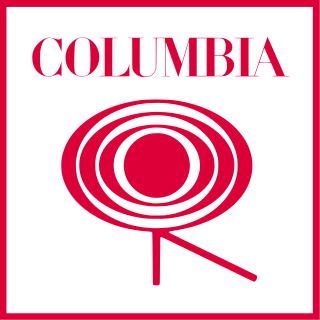
Columbia Records is an American record label owned by Sony Music Entertainment, a subsidiary of Sony Corporation of America, the American division of Japanese conglomerate Sony. Columbia is the oldest surviving brand name in the recorded sound business, and the second major company to produce records. From 1961 to 1991, its recordings were released outside North America under the name CBS Records to avoid confusion with EMI's Columbia Graphophone Company. Columbia is one of Sony Music's four flagship record labels: Epic Records, and former longtime rivals, RCA Records and Arista Records as the latter two were originally owned by BMG before its 2008 relaunch after Sony's acquisition alongside other BMG labels.
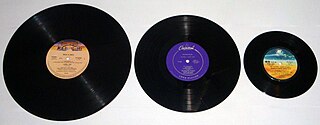
A phonograph record, a vinyl record, or simply a record or vinyl is an analog sound storage medium in the form of a flat disc with an inscribed, modulated spiral groove. The groove usually starts near the outside edge and ends near the center of the disc. The stored sound information is made audible by playing the record on a phonograph.
RCA Records is an American record label owned by Sony Music Entertainment, a subsidiary of Sony Corporation of America.

Chess Records was an American record company established in 1950 in Chicago, specializing in blues and rhythm and blues. It was the successor to Aristocrat Records, founded in 1947. It expanded into soul music, gospel music, early rock and roll, and jazz and comedy recordings, released on the Chess and its subsidiary labels Checker and Argo/Cadet. The Chess catalogue is owned by Universal Music Group and managed by Geffen Records and Universal Music Enterprises.

Vee-Jay Records is an American record label founded in the 1950s, located in Chicago and specializing in blues, jazz, rhythm and blues and rock and roll.

Contemporary Records was a jazz record company and label founded by Lester Koenig in Los Angeles in 1951. Contemporary produced music from a variety of jazz styles and players.
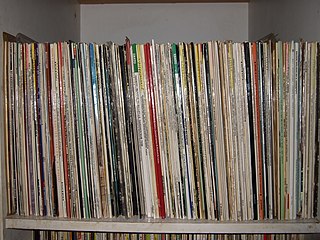
Record collecting is the hobby of collecting sound recordings, usually of music, but sometimes poetry, reading, historical speeches, and ambient noises. Although the typical focus is on vinyl records, all formats of recorded music can be collected.
Graeme Emerson Bell, AO, MBE was an Australian Dixieland and classical jazz pianist, composer and band leader. According to The Age, his "band's music was hailed for its distinctive Australian edge, which he describes as 'nice larrikinism' and 'a happy Aussie outdoor feel'".

Lu Watters & the Yerba Buena Jazz Band is the name of an American traditional jazz revival band founded by Lu Watters in 1940. Yerba Buena was the original name of San Francisco, California. Notable members included singer and banjoist Clancy Hayes, clarinetist Bob Helm, trumpeter Bob Scobey, trombonist Turk Murphy, tubist/bassist Dick Lammi, and Watters himself.

The LP is an analog sound storage medium, specifically a phonograph record format characterized by: a speed of 33+1⁄3 rpm; a 12- or 10-inch diameter; use of the "microgroove" groove specification; and a vinyl composition disk. Introduced by Columbia Records in 1948, it was soon adopted as a new standard by the entire US record industry and, apart from a few relatively minor refinements and the important later addition of stereophonic sound in 1957, it remained the standard format for record albums during a period in popular music known as the album era. LP was originally a trademark of Columbia and competed against the smaller 7-inch sized "45" or "single" format by RCA Victor, eventually ending up on top. Today in the vinyl revival era, a large majority of records are based on the LP format and hence the LP name continues to be in use today to refer to new records.
John Grant Sangster was an Australian jazz composer, arranger and multi-instrumentalist. He is best known as a composer although he also worked with Graeme Bell, Humphrey Lyttelton and Don Burrows. His solo albums include The Lord of the Rings-inspired works starting with The Hobbit Suite in 1973.

Merry Christmas is a Christmas-themed compilation album by Bing Crosby that was released in 1945 on Decca Records. It has remained in print through the vinyl, CD, and downloadable file eras, currently as the disc and digital album White Christmas on MCA Records, a part of the Universal Music Group, and currently on vinyl as Merry Christmas on Geffen Records. It includes Crosby's signature song "White Christmas", the best-selling single of all time with estimated sales of over 50 million copies worldwide. The album was certified 4× Platinum by RIAA for selling over 4 million copies in United States. The original 1945 release and subsequent re-releases and re-packages spent a total of 39 weeks at no. 1 on the Billboard pop albums chart.
Alexander Hutchinson is a Melbourne-based Australian musician, who mainly plays clarinet, but also saxophone. His lifetime non-stop seventy year career extends from when he was first professionally employed as a performer at the age of fifteen in 1949 until his effective retirement in 2019.
This is the complete discography of the main 12-inch (8000) series of LPs issued by Verve Records, a label founded in 1956 by producer Norman Granz in Los Angeles, California. Alongside new sessions Granz re-released many of the recordings of his earlier labels Clef and Norgran on Verve.
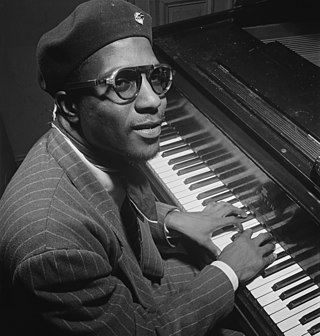
The following is a discography of American jazz pianist and composer Thelonious Monk.

The Charlie Parker Story is an LP record by Charlie Parker, released posthumously by Savoy Records. While many of the tracks on this album had been previously released on other formats, this is the first album that chronicles the entire session, recorded November 26, 1945, including all takes of all pieces. This session is famous in that it is the first recorded under Parker's name. It is also controversial, in that to this day it is unclear who the pianist and trumpet player are on all of the tracks.

The Immortal Charlie Parker is an LP record by Charlie Parker, released posthumously by Savoy Records. Several tracks on this album had been previously released on other formats, but is the first 12-inch release of these master takes. It contains selections from five sessions recorded between 1944 and 1948, and contains several previously unreleased alternate takes from these sessions.
Johann Ferdinand "Johnny" Parth, is an Austrian record producer, retired club owner, musician and artist, who founded Document Records, the leading record label in the reissue of early jazz and blues recordings.
Bill Armstrong AM is an Australian music producer.
